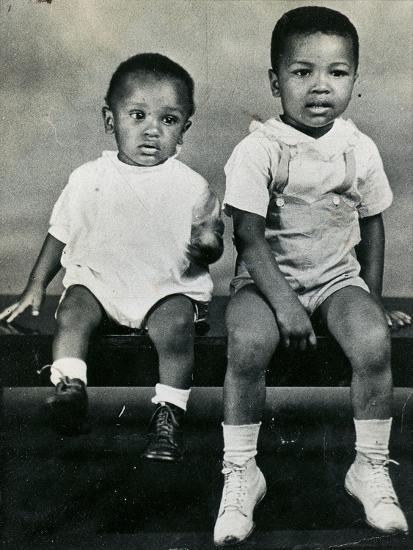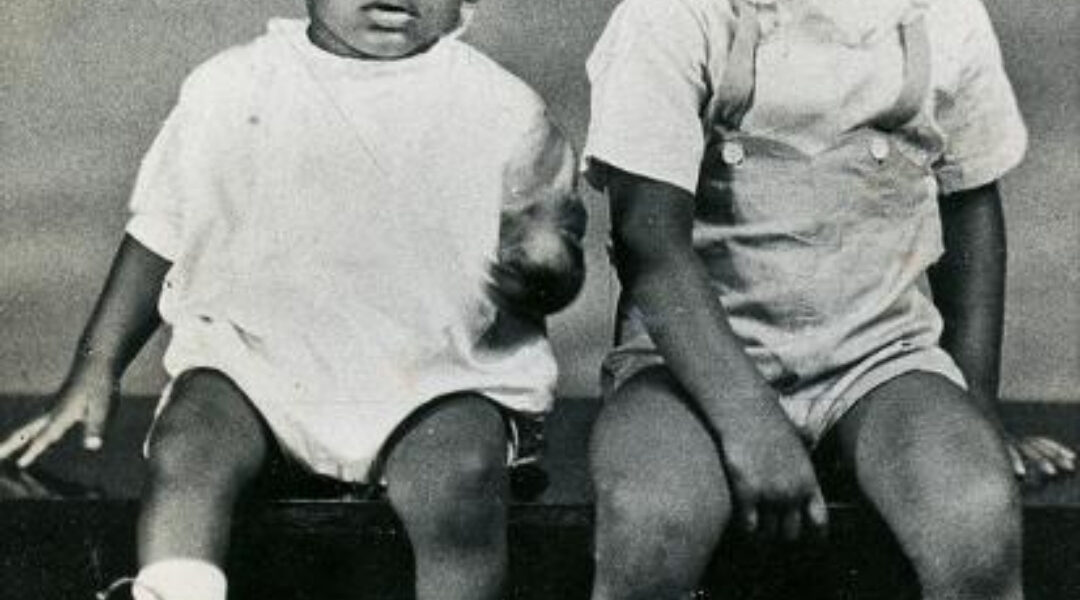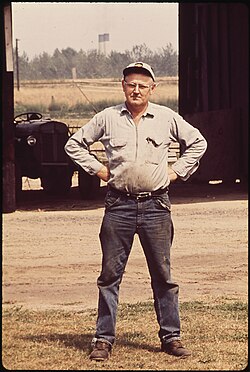
In the deeply segregated South of the 1950s, Lake City, South Carolina, was the kind of town where boundaries were drawn not just by streets, but by skin. Signs marked where you could sit, drink, learn, and even dream.
Yet in that small town, in a tiny wooden house surrounded by fields and sky, two brothers were already dreaming far beyond those limits.
Carl and Ronald McNair were born just ten months apart — bound by blood, mischief, and a shared curiosity about how the world worked.
They spent their childhood building toy airplanes from scrap metal, stargazing from their porch, and talking about what lay beyond the clouds. Ronald, the younger of the two, had a hunger that nothing could satisfy — not for food, but for knowledge. Books became his world, his escape, and eventually, his rebellion.
One humid afternoon in 1959, Ronald decided he wanted a book. Not just any book — one about science, something far beyond his school’s limited shelves. So, with Carl by his side, he walked into the Lake City Public Library, a place that, at that time, was reserved for white patrons only.
Inside, the room fell silent. The librarian froze. All eyes turned toward the two small Black boys standing in a space where they were not supposed to exist.
Ronald, only nine years old, stepped up to the counter, placed his books down, and politely asked to check them out.
The librarian’s answer was cold and immediate.
“This library is not for coloreds,” she said.
Carl shifted uneasily, glancing toward the door. But Ronald didn’t move. He didn’t shout, or argue, or plead. He simply looked at her, calm and determined, and said quietly, “I’ll wait.”
Minutes passed. Then the librarian called the police.
Soon, an officer arrived — along with the boys’ mother, Annie McNair.
She had been summoned from her job and now stood face to face with authority. In that small library, history hung in the balance — between a frightened child, a weary mother, and a woman behind a counter enforcing unjust rules.
Annie didn’t back down. She spoke with quiet fire, insisting that her son had every right to read.
Perhaps it was her conviction, or the presence of a watchful police officer, or maybe the courage of a small boy sitting silently among forbidden books — but something shifted.
That day, the librarian relented.
Ronald was allowed to borrow the books.
When he walked out of that building, he carried more than just paper and ink — he carried the weight of possibility.
The moment was small in scale, but monumental in meaning. It wasn’t a protest march or a courtroom victory, yet it embodied both. It was a child’s declaration that knowledge belonged to everyone.
From that day forward, Ronald McNair read relentlessly. He devoured science books, studied the stars, and began to believe that no rule, no wall, no prejudice could keep him from reaching the universe he loved so deeply.
Years passed. The boy from Lake City grew into a scholar.
He earned a full scholarship to North Carolina A&T State University, then pursued his Ph.D. in Physics at the Massachusetts Institute of Technology — one of the most demanding programs in the world. In 1976, he became one of the few African Americans in history to hold a doctorate in laser physics.
Ronald’s brilliance caught NASA’s attention. In 1978, he was chosen to become an astronaut — one of the first African Americans ever selected for the program.
When his brother Carl heard the news, he smiled and said, “Ron never accepted limitations. That was for other people.”
In February 1984, Dr. Ronald E. McNair boarded the Space Shuttle Challenger as a mission specialist. As the engines roared and the shuttle lifted into orbit, he became only the second Black American in space. Millions watched as he floated among the stars, the same stars he once read about in a segregated library.
He was living his dream.
And through him, so was every child who had ever been told “you can’t.”
Two years later, on January 28, 1986, Ronald climbed aboard Challenger again. The mission — STS-51-L — was meant to be a celebration of science and education. Among the crew was Christa McAuliffe, the first teacher selected for space flight.
Families across America gathered around televisions to watch the launch.
Seventy-three seconds after liftoff, the unthinkable happened. The shuttle broke apart, a streak of fire against the blue sky. All seven astronauts perished.
Ronald was 35 years old.
The tragedy stunned the world. But in the days and years that followed, what endured was not just the loss — it was the legacy. People began to learn about the boy who had once sat in a segregated library and waited patiently for his right to read. They learned about the man who turned that quiet defiance into a life of science, courage, and purpose.
Schools, libraries, and research centers across the country began to bear his name — each one a living tribute to the lesson he left behind: that knowledge cannot be contained, and that greatness often begins in the smallest acts of bravery.
Today, the Ronald E. McNair Life History Center stands near the site of the old library in Lake City — a place where children of all colors can walk through the doors freely, pick up a book, and dream of the stars.
For every young dreamer who faces barriers, Ronald’s story is a map — one that says:
Sit down. Don’t leave. Keep reaching. The sky is not the limit.
Because the boy who once waited quietly for his books didn’t just reach the stars —
he became one.




